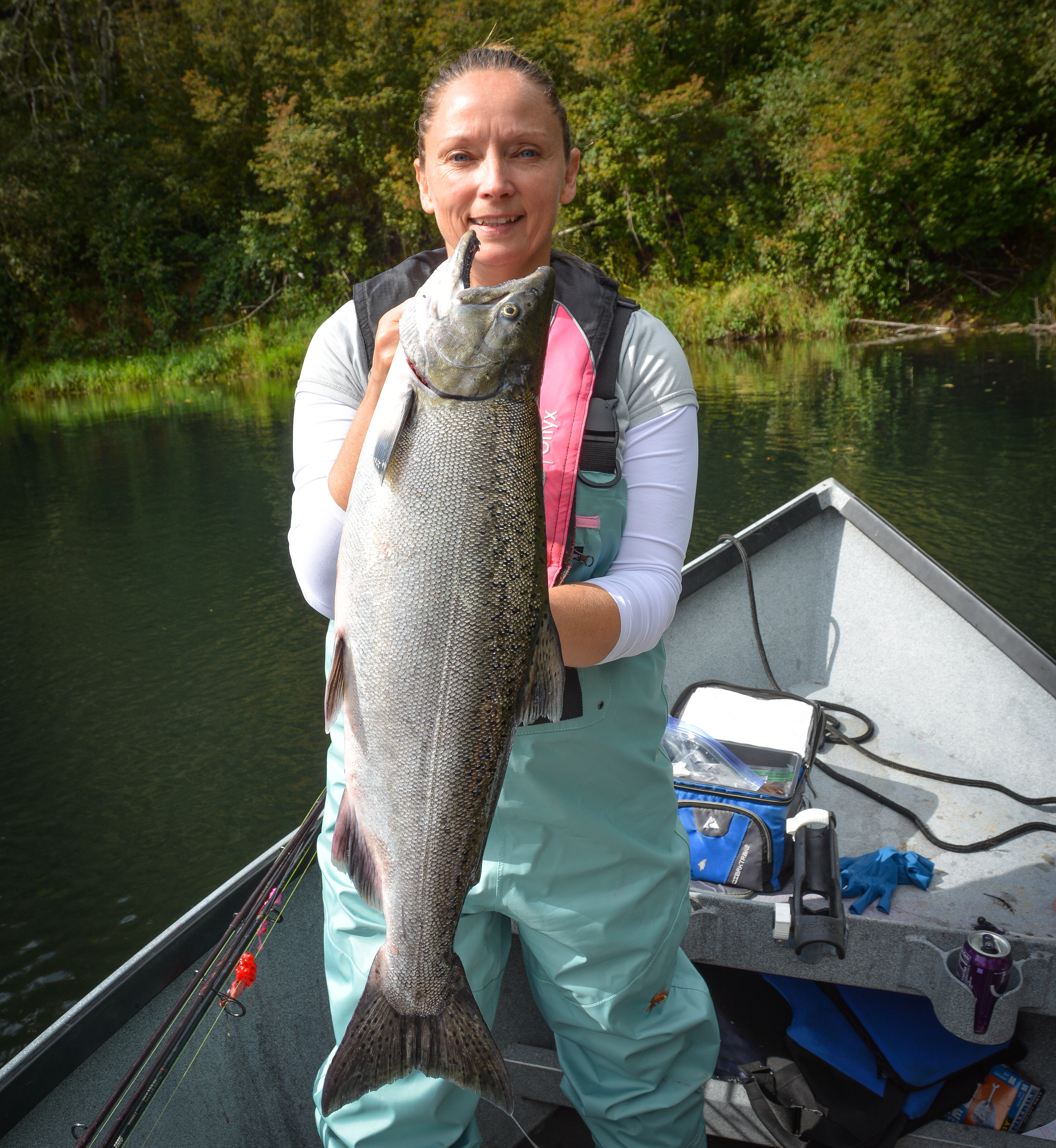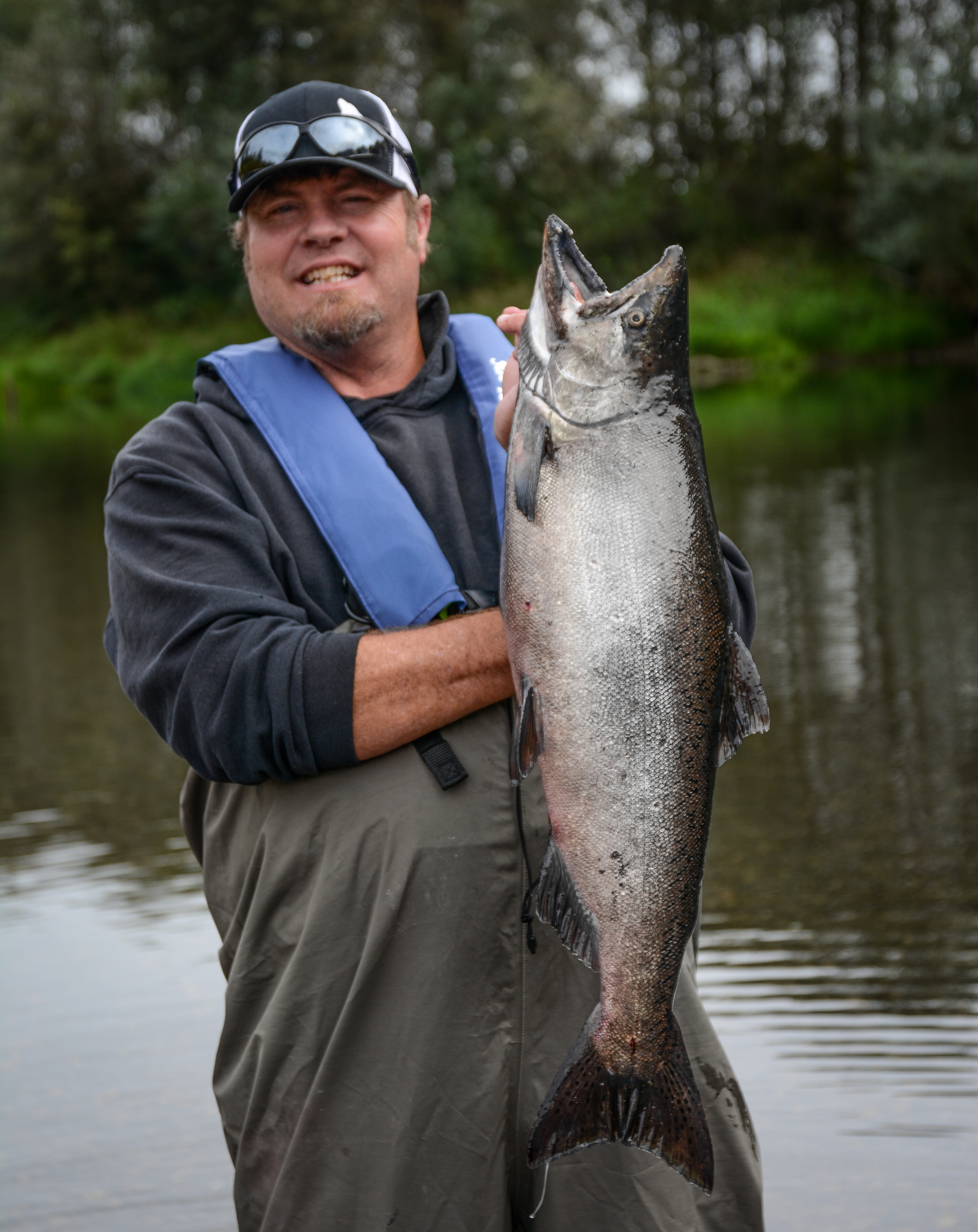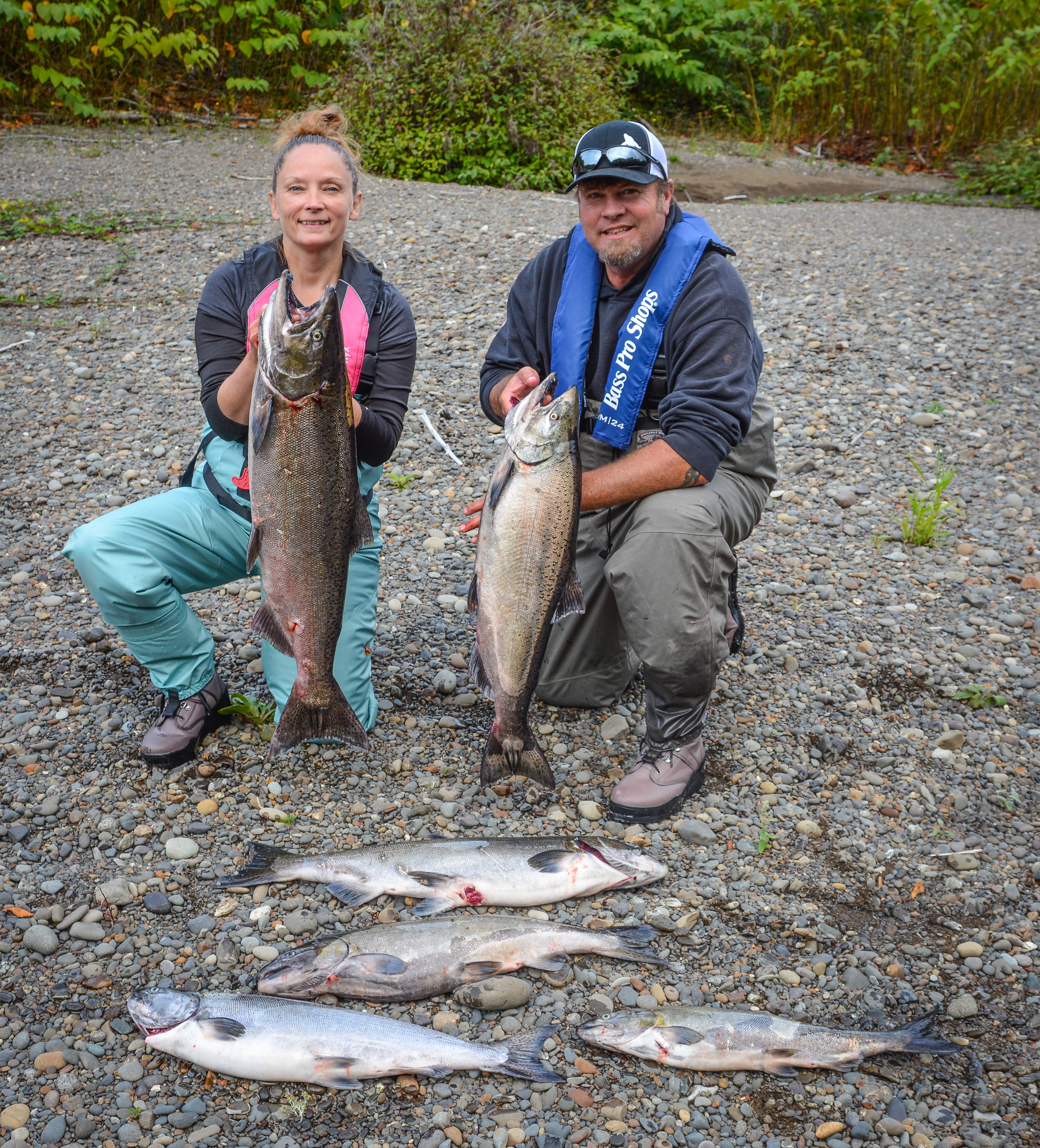Search
Latest Articles
Learn to Adjust to Catch More Salmon
by Jason Brooks, October 10, 2020
Rowing down the river and learning hazards and how the river flows is a safety issue and anyone who owns a drift boat knows that a river changes with each rain. It had been a year since I have visited this river and it had changed a lot. Some holes were stacked with people, and I would sit and watch them. See what techniques they were using and how the fishing was. Other places were log jams and seams where fish were holding or where they would be holding when another push of fish came in. We didn’t even get a bite that first day but it was a success, and I would soon learn how successful it really was.
The next weekend we floated the river with my father who had visited from Eastern Washington. Knowing that the river would be very popular we decided to launch late. Allowing others to get to the holes and fish for a few hours in hopes they would move on by the time we got there. We went down the river and came to the first hole only to find several bank anglers had crossed the river and found it for themselves. Knowing they wouldn’t go anywhere, as they couldn’t keep going down the river like us, we decided to keep on venturing down to the next hole. It was like this for the first mile, every place we came too that had been discovered the week prior was full of anglers. I knew the river would be full but this was crazy. Finally, we floated to a spot that held fish and was pleasantly surprised to find nobody else in the hole. Dropping anchor, I informed my dad and my son that we would be here for the afternoon.
Trying a few different techniques, we settled on floating eggs and eventually caught a couple of fish. Always vigilant and learning I noticed how fish would roll below us in another long run where two anglers where fishing. Within twenty-minutes fish would start rolling in our hole. It was fish on the move, making their way upriver after coming in from the high tide. Most of the time I would relax and just enjoy the day while sitting in the boat, but when I saw the fish rolling below us I made sure to re-bait with fresh cured roe and tip one set-up with a tuna ball, another with sandshrimp and one with plain eggs. When one of us would get a bite we all switched to what that person was fishing. Adjusting our plans and being flexible is how we were successful.
The next day we found less people on the river but still most holes were full of anglers. I was able to look downriver to the hole that produced for us the day before and there was a boat in there. So, we joined the crowds in the top hole and I waited. Fishing “combat” style sucked but I knew it was only a matter of time. After a few hours and keeping my eye on the small spot below us I saw the boat had moved on. My brother Troy and sister-in-law Lijah had joined me on this day, both had never been in a drift boat before and Lijah had never even caught a salmon before. I quietly told them to get in the boat and we moved downriver without making a ruckus. When we got to the hole I asked them to not shout or yell when we hooked a fish. About a half hour later Lijah hands were shaking when she got the pleasure of filling out her catch record card for the first time when a nice mid-teens hatchery chinook hit the net. In the next three hours we landed five fish, one was unclipped and let go and both Troy and Lijah had their limits of chinook.
Adjusting not only means finding different holes and learning rivers but also adjusting to the fish in the same spot others are fishing. The last day of our trip was a weekday and when we came around the bend and found only one boat in the most popular hole on the river I was a bit surprised. We got the “best” spot in the hole as the other boat had moved down to rolling fish at the end of the bend. I set us up for float fishing eggs again and did the usual mix of add-ons to find what they would bite on. I had also remembered my first day on the river a week ago, sitting and watching anglers for a few hours and not seeing too many hook-ups. Pondering this for a week I kept wondering why they weren’t catching many fish. Another spot on the river had been occupied by a guide every time we floated by. It was a small seam on a gradient and had good current with a log jam next to it. These fish were holding in water full of oxygen and well rested and willing to bite readily. In the deep hole these fish kept rolling and sitting in near stagnant water.
I have “hover” fished many times in the Columbia River Gorge and knew that those fish were resting in near stagnant water and the bite was so soft that you had to pay attention to any pull on the rod. The bite in swifter water was more violent with a clear “bobber down”. The baits also needed to be adjusted. Thinking back to a conversation I had with Steve Lynch and Jason Hambly of Pro-Cure, both told me about sodium sulfites, Slam-Ola-powder, and Monster Bite, being bite stimulants and how they worked. I began sprinkling the baits with these additives, each bait with a different one. I had Monster Bite on my eggs with a small tuna ball as an add on. Watching my float I noticed that it had gone through the same little slot like it had done dozens of times in the past two hours but this time it stopped. It didn’t go down or even bob a bit, it just stopped. Thinking my stop knot had slipped and the bait was on the bottom of the river I lifted the rod and was met with a pull back. It was a fish! We had been getting bit and didn’t even know it. The fish were acting just like the fish in the Columbia Gorge, holding the baits in their mouths and not really biting down and pulling. Basically we were “hover fishing”. Anyone who has float fished eggs for chinook know to keep a bend out of the line and let it naturally float down the river and wait for the bobber to go down. Instead on this day it was wait for the bobber to stop. We hooked five fish in a row after figuring that out.
Years ago we fished a river late in the year. Raining hard the river was twice the flow then when we usually fished it. The water was green and had low visibility. Twitching jigs for late run coho often produced and in the first hour of the day we had boated a couple of fish. Then the bite “turned off” or so we thought. What really happened was the rain continued to fall and the river became flooded. We didn’t notice the water went from green to thick brown and the visibility was nearly zero. At the take out we met two guides and they were surprised we had any fish at all when we said we were twitching jigs all day. They had limits and informed us all were caught on spinners. That was because the bright brass and silver blades cut through the low visibility and the vibration of the spinners added to the attraction. They adjusted to the water conditions and we didn’t and that made all the difference on that day.
You need to be willing to change and adjust your fishing. It can be things such as baits, lures, and techniques and even where you fish. From your favorite hole to a different river. If you go to the water and use the same technique at the same spot every time; then don’t expect the same results. Fish move, rivers change and anglers often do neither. Instead we hear stories of how the runs are ruined, there’s no fish or the river isn’t like it used to be. If you go prepared to adjust to conditions and take the time to re-learn the river and the fish, you will increase your success.
Jason Brooks is an outdoor writer based in Washington and the Editor of The Tailout, an online magazine dedicated to all things Salmon & Steelhead related.


